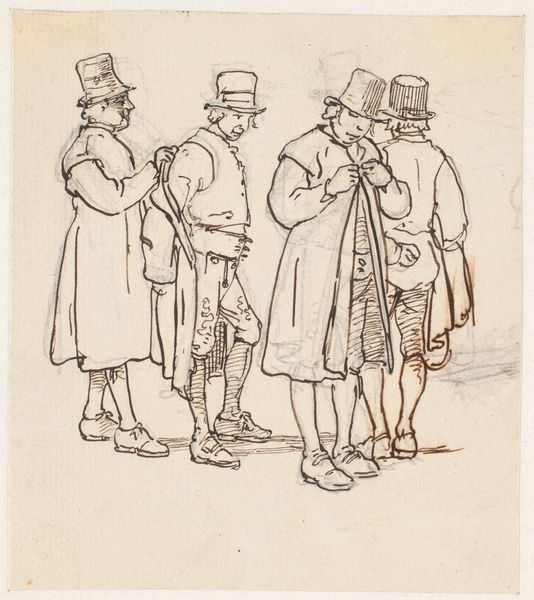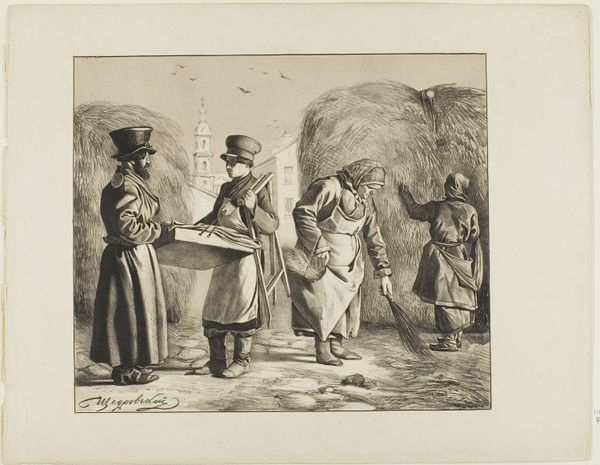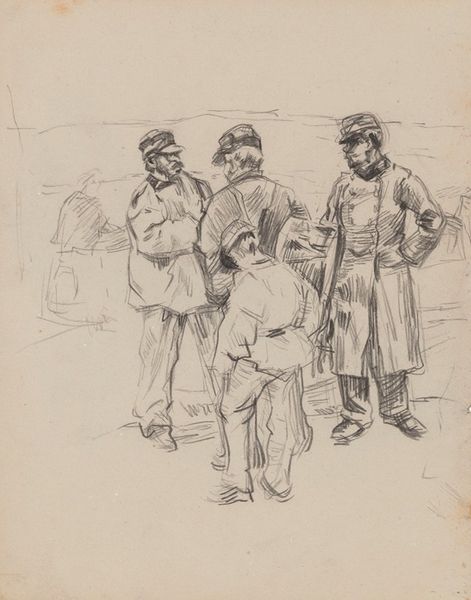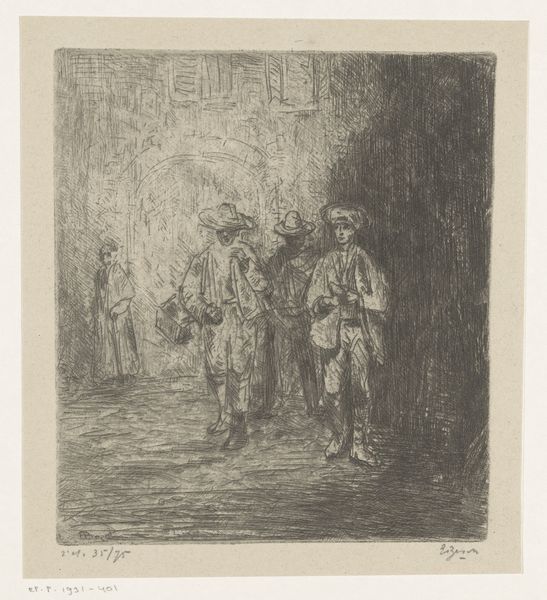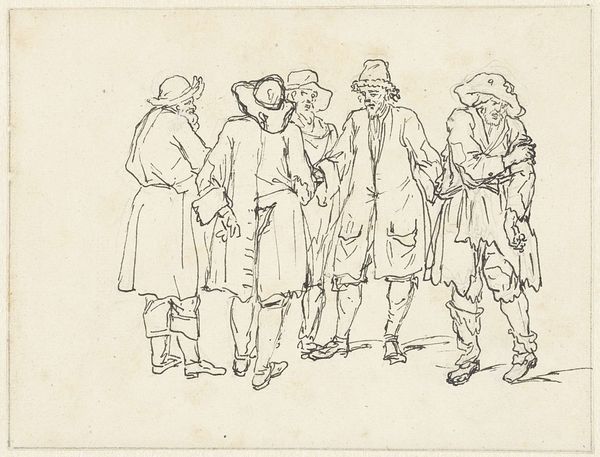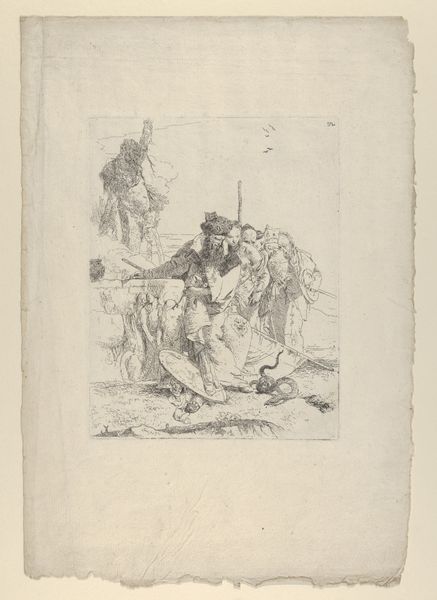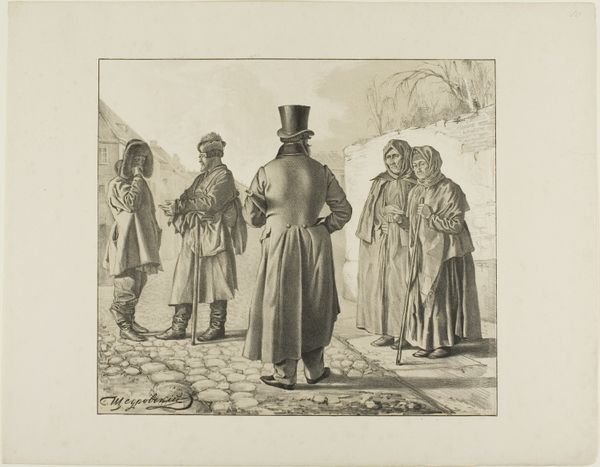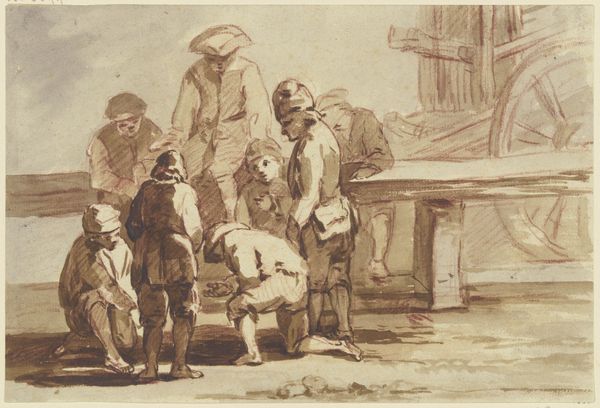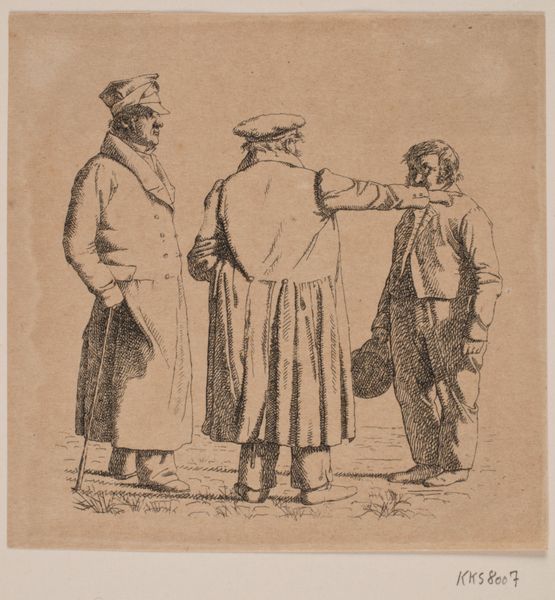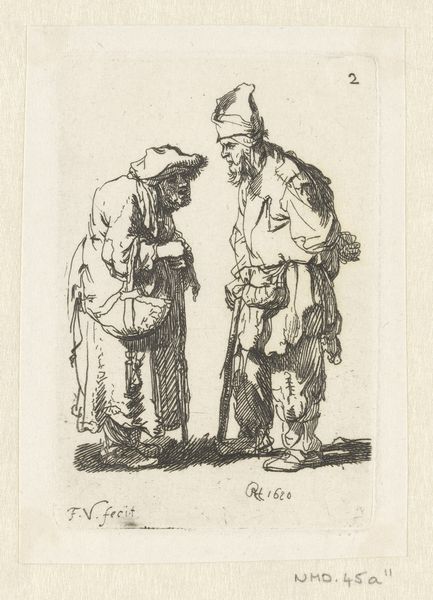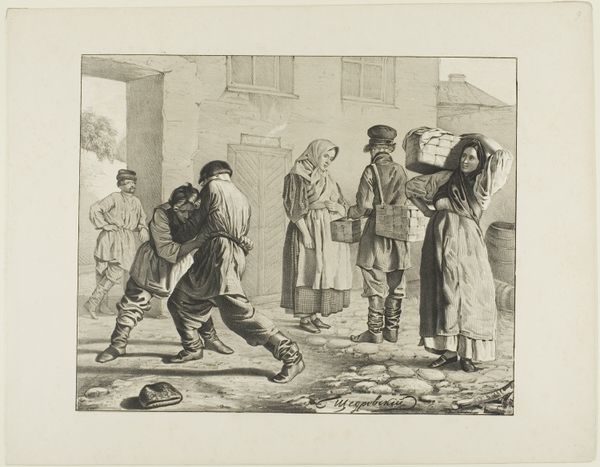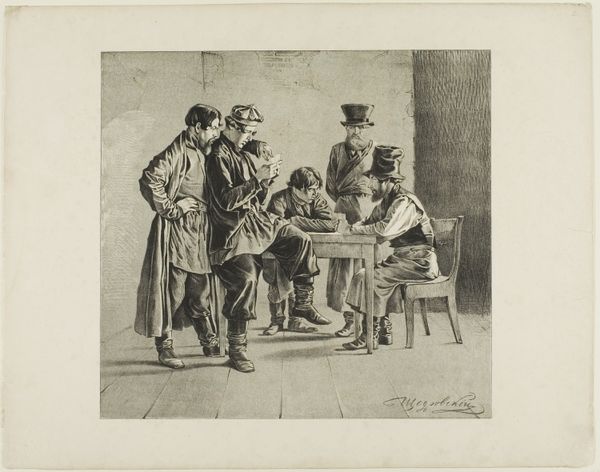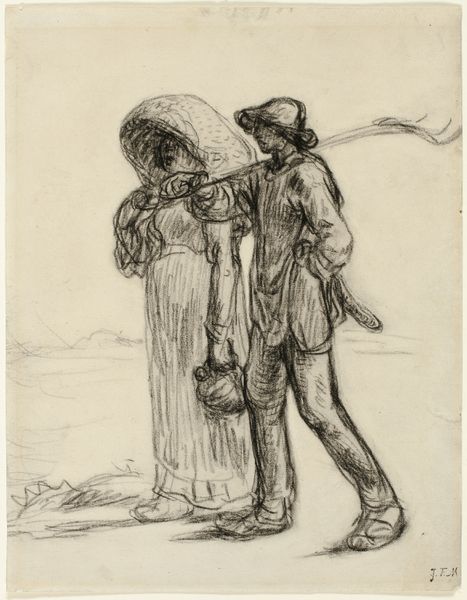
Soldaten en burgervrouw in legerkwartier tijdens de Eerste Wereldoorlog 1917
0:00
0:00
Dimensions: height 550 mm, width 378 mm
Copyright: Rijks Museum: Open Domain
Curator: Looking at this, I feel like I've stumbled into a muted dream. Editor: Indeed. We're looking at "Soldaten en burgervrouw in legerkwartier tijdens de Eerste Wereldoorlog," a work from 1917 by Théophile Alexandre Steinlen. It appears to be a print, possibly using pencil or a similar drawing medium. Curator: There's a tenderness, almost a vulnerability to it, especially in the way the figures are sketched. Not posed, but… captured. Editor: Right, the informality draws us in. Steinlen created this during World War I, a time when, through press and propaganda, nations idealized their own soldiers. How do you see this composition fitting in at this time? Curator: The presence of the civilian, that woman...she complicates things, doesn't she? She represents the world they are supposedly defending, but the drawing seems to emphasize their shared humanity. She brings an element of grounding amidst the war. It feels melancholic. Editor: Melancholy perhaps stems from the war's societal impact, which is where Steinlen makes a commentary. His work brings out how civilians struggled. During this period, we know civilians often faced displacement and shortages as the war machine requisitioned resources. Curator: Exactly. She’s not just a passive figure, either. She’s exchanging something—goods, information? There's an economy of survival happening right there, on the ground. This interaction is something you wouldn’t normally see from traditional propagandist depictions of war. Editor: The lines around their faces create this effect: they’re all experiencing similar hardships. Their expressions feel real; reflecting a common experience. How do you see this image speaking to modern audiences today? Curator: We’ve become wary of heroic portrayals. This work strips away any sense of glory to highlight human bonds amid chaos. That remains perennially relevant. War touches everyone. Steinlen helps us confront that shared burden. Editor: Absolutely, and perhaps it’s the drawing’s unfinished quality, its sketch-like nature that amplifies this. A photograph may solidify the moment in time but with its looser depiction of subjects, Steinlen's composition offers more introspection and more relevance. Curator: This drawing feels like a gentle nudge, urging us to consider the human cost of grand narratives, the importance of small kindnesses, and the silent resilience of ordinary people. Editor: Very well put, it's the intimacy he conveys of people persevering in a setting that continues to resound beyond its initial moment in time.
Comments
No comments
Be the first to comment and join the conversation on the ultimate creative platform.
